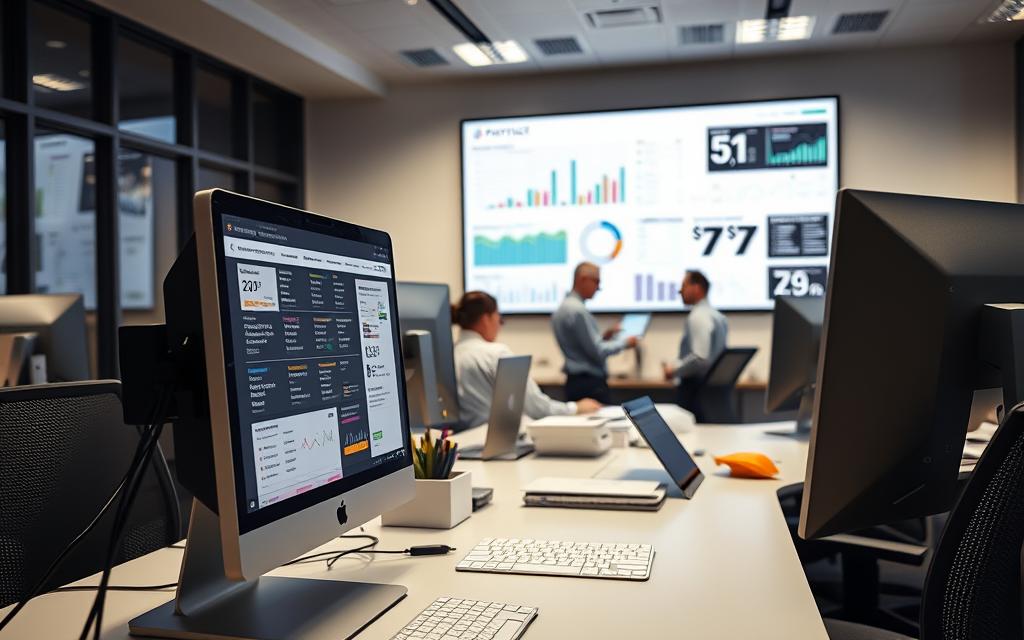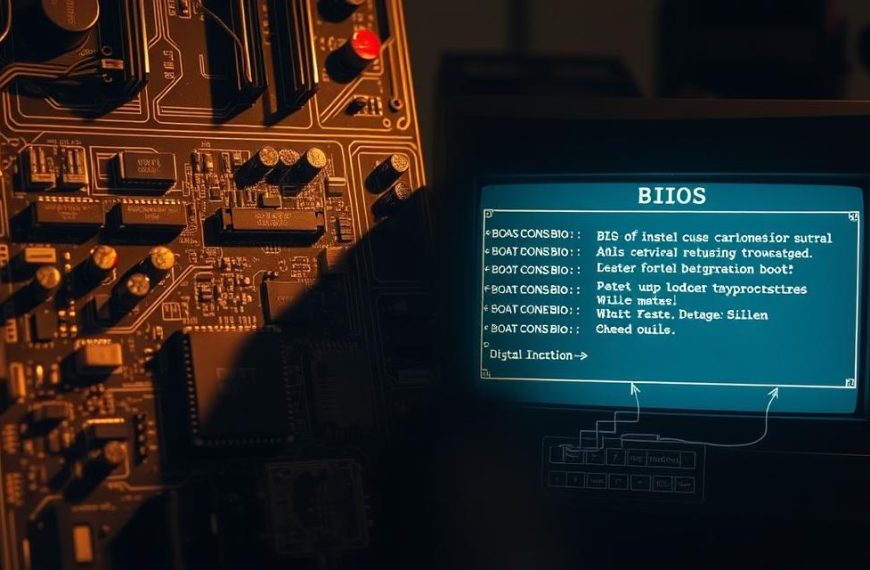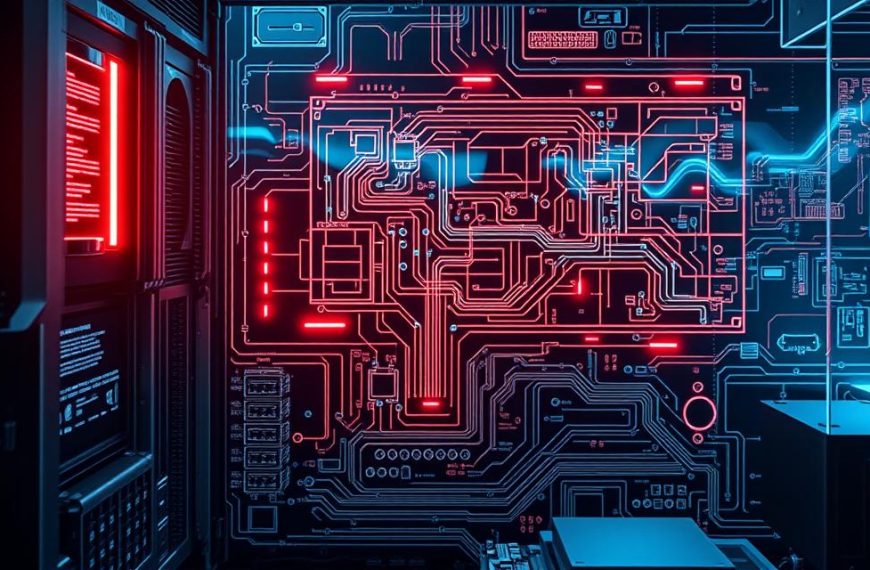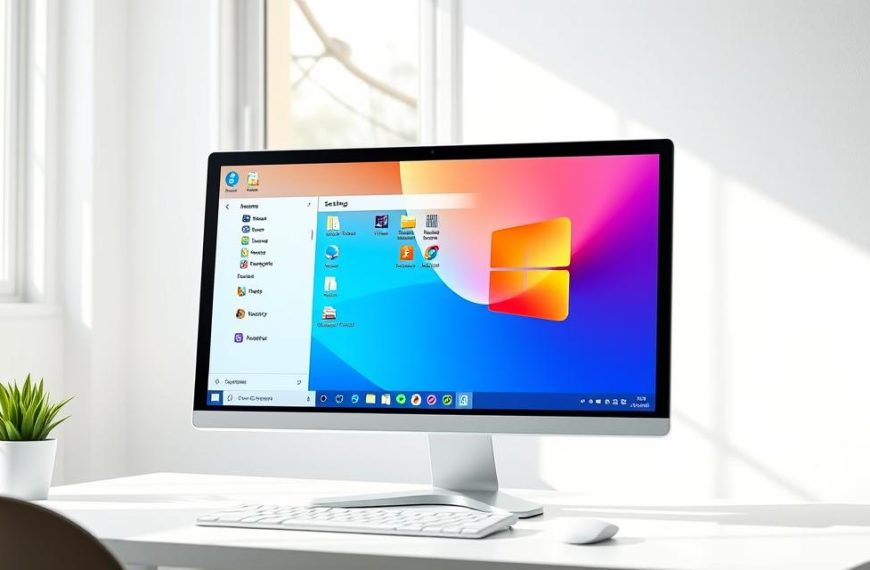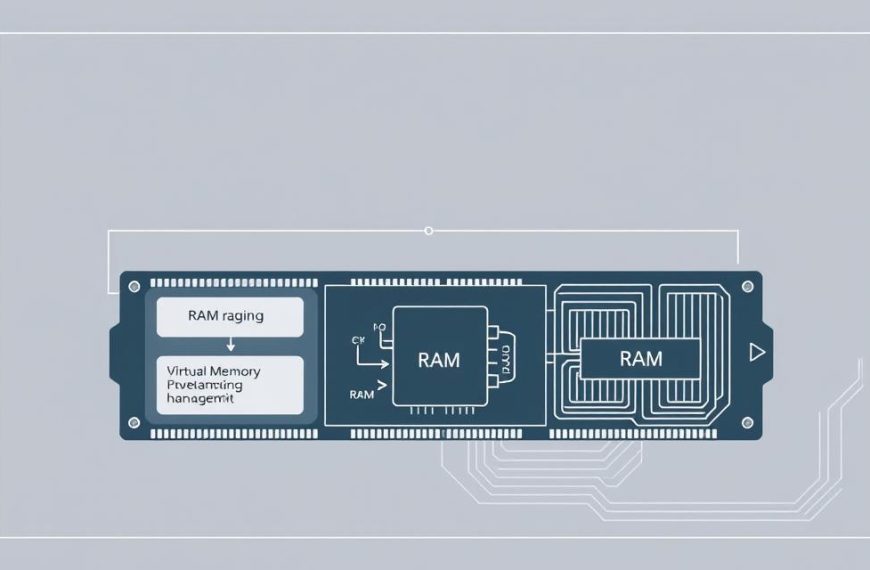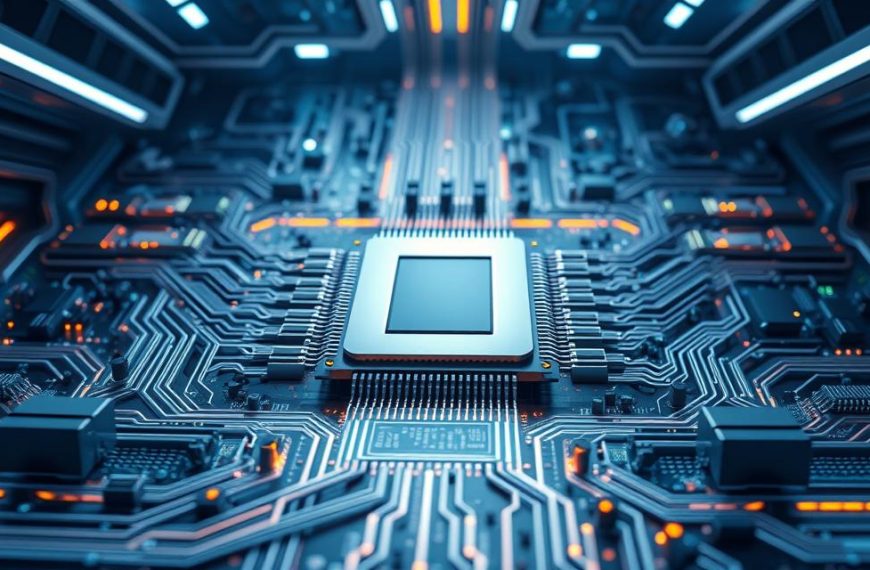Managing employee payments is a big challenge for businesses. Old ways of doing it take up a lot of time and can lead to expensive mistakes.
Today’s payroll software benefits by making this hard task easier. It automates boring tasks like calculations and data entry. This saves a lot of time and effort.
Using a computerised payroll system makes financial tasks very accurate. It cuts down on mistakes and keeps everything in line with tax laws.
Companies get a lot of benefits from using these systems. They work better and more reliably. Switching to automated systems is a smart move for better financial management.
Defining the Modern Payroll Computer System
Today’s payroll systems are a big step up from old ways. They give businesses smart tools to handle employee pay with great accuracy. These systems use advanced software and smart data processing for tasks like salary calculations and tax rules.
Core Components and How They Function
Modern payroll systems have many parts working together. The heart of it is the calculation engine. It deals with hours worked, overtime, bonuses, and deductions based on set rules.
Tax modules apply the latest tax rates automatically. Deduction handlers manage things like benefits and retirement plans. The system also talks to other software like time-tracking and HR platforms.
These automated payroll features make a smooth system. It learns from past data and changes with business needs.
Transition from Manual to Computerised Payroll
The move from manual to computerised payroll is a big step forward. Gone are the days of spreadsheets. Now, special software handles the whole payroll process.
This change fixes many problems of manual methods. It reduces errors, risks, and saves time. The difference between manual vs computerised payroll is clear in speed, accuracy, and compliance.
Switching to automated systems makes businesses more efficient and reliable right away. The setup involves matching the software to current payroll systems. It also unlocks new features that manual methods can’t offer.
Modern systems offer detailed reports, audit trails, and live analytics. They turn payroll into a key business function. This change is not just about technology. It’s a new way of managing a company’s most important asset—its people.
Boosting Operational Efficiency
Modern payroll computer systems change how companies handle employee pay. They make complex tasks easier. These systems boost workplace productivity with smart automation and smooth connections.
Automation of Repetitive Tasks
Payroll software cuts down on manual work. It handles wage calculations, tax deductions, and direct deposits on its own.
An HR manager shared a big win: “Automated payroll software cut our processing time by 90% compared to doing it manually.”
Time and Resource Savings
Automation saves a lot of time for payroll teams. Staff can now focus on important business tasks instead of manual work.
Time tracking systems also help. They send employee hours straight to payroll, cutting down on data entry and work.
Integration with HR and Accounting Software
Good HR software integration makes business functions work together better. Payroll systems link up well with HR and financial software.
This connection keeps data the same across departments. It also cuts down on mistakes. Employee info updates in all systems at once.
Payroll, HR, and accounting working together makes things smoother. Businesses get real-time data and detailed reports.
Ensuring Unparalleled Accuracy
Modern payroll systems are incredibly precise, far beyond what humans can do. They turn payroll from a manual task prone to errors into a reliable process. The payroll accuracy benefits go beyond just numbers, building a solid financial base for your business.
Elimination of Human Calculation Mistakes
Automated payroll systems handle earnings, deductions, and taxes with perfect accuracy. They use set formulas and update tax rates automatically. This removes the chance for errors that come with manual work.
Even skilled payroll experts can make mistakes under pressure. But computerised systems do the same calculations with the same accuracy every time. This means no room for human error.
This leads to consistent error reduction payroll that benefits everyone. Employees get paid right, and companies avoid financial and reputation issues from wrong payments.
Real-Time Error Detection and Correction
Advanced payroll systems have built-in checks that spot problems right away. They compare data as it’s entered against set standards and past data. If something doesn’t fit, the system alerts admins before it’s too late.
This approach means errors are caught and fixed early, not after payments are made. The real-time payroll corrections feature changes error handling from reactive to proactive.
These checks can spot everything from simple mistakes to big compliance issues. They might flag unusual overtime claims or tax code errors. This thorough checking ensures payroll is accurate at every step.
What is the Advantage of a Payroll Computer System Quizlet
Modern payroll systems change how companies pay their employees. They offer clear benefits that are easy to use and apply.
Key Efficiency Benefits Summarised
Payroll software makes work more efficient in several ways:
- Automated calculations cut down on manual work
- It works well with HR and accounting systems
- It speeds up processing time a lot
- Employees can manage their data online
- It makes reports for managers easy to read
These features make work flow better, saving a lot of time. The efficiency summary payroll shows how tech handles tasks quickly.
Key Accuracy Benefits Summarised
Computerised systems are very accurate because of their advanced features:
- They spot errors right away during data entry
- They keep tax calculations up to date
- They follow rules as they change
- They keep a clear record of everything
- They handle deductions for benefits and taxes automatically
The accuracy summary payroll shows how these systems avoid big mistakes. They keep records right and update for new rules.
This quizlet format makes it easy to see the main benefits. Companies can quickly see how these systems help their work.
Cost Reduction and Financial Benefits
Payroll computer systems do more than just improve efficiency and accuracy. They also bring big financial wins that boost your profits. These systems turn payroll from a cost into a valuable asset by cutting down on expenses and avoiding costly errors.
Lower Administrative Costs
Manual payroll takes a lot of time and resources. Computerised systems cut down on administrative costs by doing the hard work for you. They handle calculations, tax filings, and reports automatically.
This means less time spent on payroll and more on important HR tasks. Businesses can save 30-50% of time on payroll after using these systems. This time saving leads to lower labour costs and more resources for other important tasks.
Avoiding Penalties from Errors
Payroll mistakes can lead to big financial problems. Errors in tax filings or calculations can cost a lot. EY research shows each mistake costs around $291, including fines and correction time.
Modern payroll systems have features to help avoid these penalties. They keep tax tables up to date, check data, and spot issues before they happen. This helps businesses stay out of trouble with the law and avoid fines.
By saving on labour costs and avoiding penalties, businesses can see big payroll cost savings. These savings often pay for the cost of the system within the first year.
Enhancing Data Security and Compliance
Payroll systems do more than just manage payrolls. They protect sensitive information and follow the law. These systems keep employee data safe and ensure legal compliance. This makes them secure and ready for audits.
Secure Data Handling and Access Controls
Payroll systems use strong encryption to keep data safe. This encryption works when data is sent or stored. It makes sure employee details stay private.
Role-based access controls are key to payroll data security. They let only certain people see or change data. For example, only managers can change salaries.
Real-world examples include:
- Multi-factor authentication for system access
- Automatic logging of all user activities
- Customisable permission levels by department
These steps stop data breaches and keep records clear. Companies can see who accessed what and when. This is very helpful during audits.
Automated Updates for Tax Laws and Regulations
Taxes change often, and keeping up is hard. Automated payroll systems help with compliance automation. They update tax rules and calculations regularly.
The software updates tax rates and rules automatically. This avoids using old calculations that could cause problems. It updates overnight, so morning calculations are always current.
This compliance automation covers more than just federal taxes. It includes:
- State and local tax requirements
- Industry-specific regulations
- International tax treaties for global companies
For tax law updates payroll systems are very useful at year-end. They make accurate tax documents using the latest rules. This avoids errors that could lead to audits or fines.
Modern systems also keep records of all regulatory changes. This helps show compliance during audits. The automation of tax law updates payroll greatly reduces risks for businesses.
Scalability and Future-Proofing Your Business
Getting a modern payroll system does more than just make things more efficient. It sets your business up for long-term growth. These systems grow with your company, keeping your payroll operations strong as your business grows or changes.
Adapting to Increasing Employee Numbers
Scalable payroll systems are great because they handle more employees easily. Whether you’re adding seasonal workers or growing fast, these systems adjust without needing a full overhaul.
What makes them adaptable includes:
- Customisable pay schedules for different employee types
- Support for various pay structures and compensation plans
- Automated onboarding for new employees
- Handling payroll across multiple states and countries
This means your payroll system won’t get outdated as your employee numbers grow. It keeps up with your growth, ensuring accuracy and following rules at every step.
Keeping Pace with Technological Advances
A top-notch future-proof payroll solution keeps up with new tech. It gets regular updates with new features, better security, and rule changes.
These updates often include:
- Cloud access for working from anywhere
- Integration with new HR tech
- Automatic updates for tax and rule changes
- Mobile apps for managers and staff
Choosing a system that evolves with technology means your payroll stays efficient and up-to-date. This approach avoids the need for constant system updates, saving you money and keeping things stable.
The right payroll system is a key asset for your business. It turns payroll into a tool that helps your business grow, scaling smoothly with your success.
Conclusion
Getting a modern payroll computer system is a game-changer for businesses of all sizes. It makes operations smoother, cuts down on mistakes, and helps your business grow.
There are many benefits to using a payroll system. It automates tasks, making things more efficient. It also checks data in real-time, reducing errors. Plus, it saves you money.
It also keeps your data safe and makes sure you follow the rules. This is thanks to its strong security and updates on laws.
Choosing the right system is key. It should grow with your business and fit with what you already use. This way, it works well with your current software.
In the end, a computerised payroll system makes your team more productive. They can focus on important tasks, helping your business succeed and grow in the long run.
